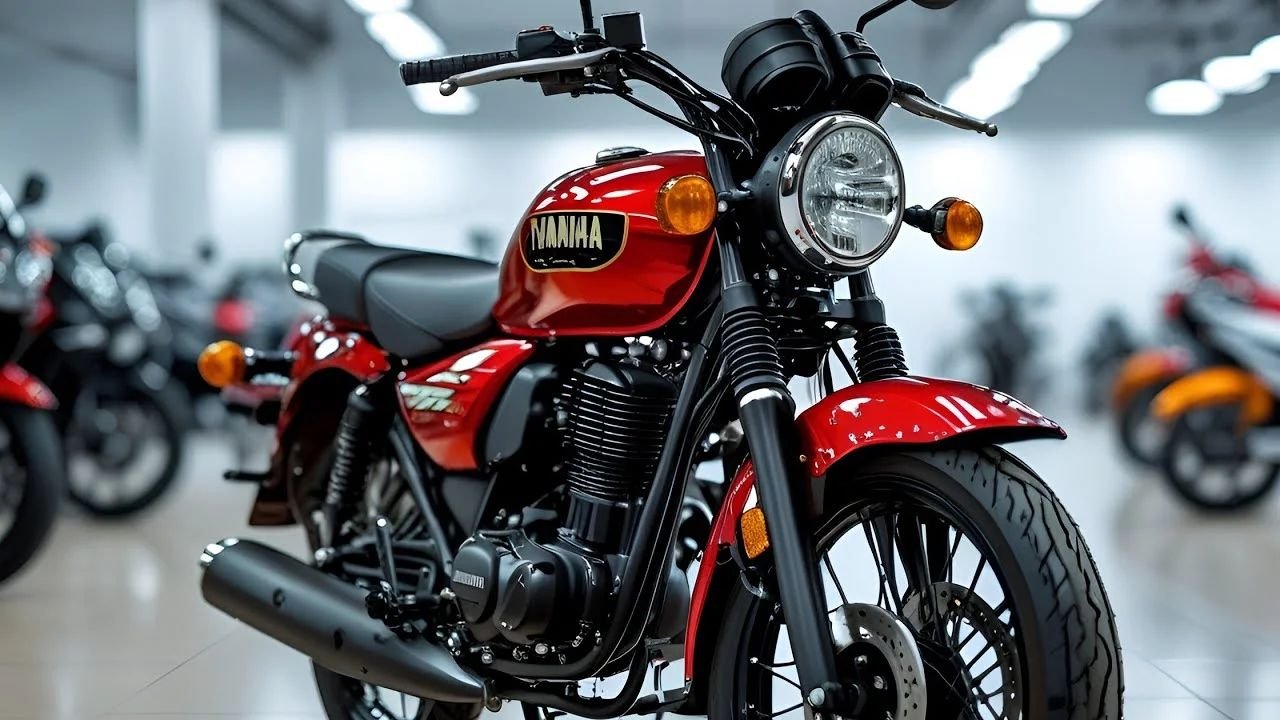Yamaha RX100 Has Arrived In a New Style to Play Its Drum with Classic Look and 50 Kmpl Mileage, In the golden era of Indian motorcycling, one name rose above the rest and etched its legacy in the hearts of millions—the Yamaha RX100. For bike lovers and adrenaline junkies of the 80s and 90s, this iconic two-wheeler wasn’t just a means of transportation; it was a lifestyle, a symbol of youth, and a roaring revolution on two wheels. Decades later, the Yamaha RX100 continues to inspire nostalgia and admiration, with enthusiasts across the country still restoring and riding this timeless machine.
This article delves into everything that made the Yamaha RX100 a legend—from its technical specifications to the cultural phenomenon it became. Whether you’re a die-hard fan, a curious collector, or someone who has just heard tales of this beast, here’s your all-in-one guide to understanding why the Yamaha RX100 remains unforgettable.
Yamaha RX100 Overview: A Machine Built to Thrill
The Yamaha RX100 made its Indian debut in 1985. Back then, the market was flooded with sluggish commuter bikes, but Yamaha decided to flip the script. With its aggressive styling, compact design, and a peppy engine, the RX100 didn’t just enter the market—it dominated it.
Technical Specifications of the Yamaha RX100:
| Feature | Details |
|---|---|
| Engine | 98cc, air-cooled, 2-stroke |
| Power Output | Around 11 HP |
| Transmission | 4-speed manual gearbox |
| Weight | Approximately 100 kg |
| Top Speed | Roughly 100 km/h |
| Braking System | Drum brakes (front and rear) |
| Fuel Efficiency | 25–30 km/l (depending on tuning) |
| Suspension Setup | Telescopic forks (front), Swingarm (rear) |
| Production Period | 1985–1996 |
These numbers might seem modest by today’s standards, but back in the day, they represented a performance marvel.
Why the Yamaha RX100 Was a National Sensation
So what made the Yamaha RX100 so incredibly popular? It wasn’t just the specs—it was the overall experience. This bike offered the kind of raw, mechanical thrill that is often missing in today’s refined machines.
1. Raw Power and Lightning Speed
The RX100’s 98cc 2-stroke engine was a firecracker. It could outpace many larger motorcycles, thanks to the quick throttle response and high-revving nature of the engine. That 11 horsepower on a lightweight 100 kg frame meant an exceptional power-to-weight ratio. This made acceleration thrilling and overtakes effortless.
2. Signature Exhaust Note
Another unforgettable aspect of the Yamaha RX100 was its distinctive exhaust sound. That high-pitched crackling and growling as you throttled up was music to the ears of any bike enthusiast. Many could identify an RX100 coming down the street just by its sound.
3. Youth Appeal and Style
The sleek fuel tank, minimalist bodywork, and retro graphics gave the RX100 a sporty, aggressive look that instantly appealed to the youth. It was available in bold colors like red, black, and blue—each adding to the bike’s head-turning charm.
Key Features That Made the Yamaha RX100 Stand Out
While modern motorcycles are packed with electronics and digital wizardry, the Yamaha RX100 relied on mechanical brilliance. Here are some standout features:
- Engine Performance: The 98cc engine offered a smooth yet rapid performance. With a 4-speed manual gearbox, gear shifts were seamless and ideal for city commuting as well as open roads.
- Handling and Ride Quality: Despite lacking disc brakes and advanced suspension systems, the RX100’s ride quality was surprisingly refined. The telescopic forks up front and twin shock absorbers at the rear ensured the ride remained comfortable over different terrains.
- Braking System: Though the bike had drum brakes on both ends, they were tuned well enough to provide reliable stopping power, especially considering the bike’s lightweight.
- Ease of Maintenance: Simplicity in engineering made the RX100 a joy for DIY mechanics and garage tinkerers. Spare parts were widely available during its heyday, and maintenance was relatively inexpensive.
The Legacy of the Yamaha RX100: A Cult Classic
Though it was officially discontinued in 1996, the Yamaha RX100 has never truly disappeared from the roads or the minds of riders. Today, it enjoys cult status. Forums, social media groups, and bike clubs dedicated to RX100 restoration and customization are thriving even in 2025.
Why the Yamaha RX100 Continues to Rule Hearts:
- Restoration Projects: Enthusiasts lovingly restore original RX100s to their factory condition, while others modify them for drag racing or show.
- Racing Pedigree: Known for its incredible acceleration and rev-happy engine, the RX100 quickly became a staple in street racing and drag competitions during its time.
- Evergreen Design: The classic, minimalist look of the RX100 never goes out of style. It’s vintage yet still incredibly cool.
- Emotional Connection: For many riders, this was their first bike—their first taste of freedom, speed, and rebellion.
Frequently Asked Questions About the Yamaha RX100
1. Why was the Yamaha RX100 discontinued?
The RX100’s two-stroke engine, while powerful, could not meet the increasingly strict emission norms introduced in the 1990s. As environmental regulations tightened, Yamaha had no choice but to retire the RX100 in 1996.
2. Is the Yamaha RX100 still available?
Brand-new Yamaha RX100 bikes are no longer in production. However, the used bike market still has quite a few options. Some rare models, especially those in mint condition or with original parts, are sold at premium prices.
3. What’s the price of a used Yamaha RX100 today?
Also Read – Royal Enfield Classic 350 Launched to Show its Power with Bahubali Engine and Premium Looks
Depending on the condition, a Yamaha RX100 can range from ₹50,000 to ₹1.5 lakhs or even more. Customized or well-restored versions fetch higher prices, especially among collectors.
4. Can I use the Yamaha RX100 for daily commuting?
Technically, yes. If maintained well, the RX100 remains a capable daily commuter. However, keep in mind that it’s not as fuel-efficient or environmentally friendly as modern bikes. Additionally, sourcing genuine spare parts can be a challenge today.
5. Why was the RX100 faster than its rivals?
The two-stroke engine design naturally offered quicker power delivery than equivalent four-stroke engines. Combined with its lightweight frame and tight gear ratios, the RX100 could outperform many bikes in its segment.
Yamaha RX100 in Modern Times: Is a Rebirth Possible?
In recent years, Yamaha has hinted at bringing back the RX100 name in a modern avatar. While this would likely involve a four-stroke, fuel-injected engine compliant with modern norms, the very idea of a reborn RX100 has excited fans around the world.
Though any new model would be vastly different from the original, Yamaha aims to retain the spirit and performance DNA that made the RX100 so iconic.
Final Thoughts: The Yamaha RX100 Is Forever
To call the Yamaha RX100 a motorcycle is almost an understatement. It’s a cultural phenomenon. It redefined what a 100cc bike could achieve and gave an entire generation their first taste of raw, unfiltered motorcycling pleasure. Even decades after its production stopped, the Yamaha RX100 lives on—in garages, on roads, in races, and in the hearts of those who rode it.
If you ever get the chance to ride or own one, consider yourself lucky. You’re not just riding a bike—you’re riding a piece of history.
Some Important Link
| Telegram Group | Click Here |
| WhatsApp Group | Click Here |
| Home Page | Click Here |















